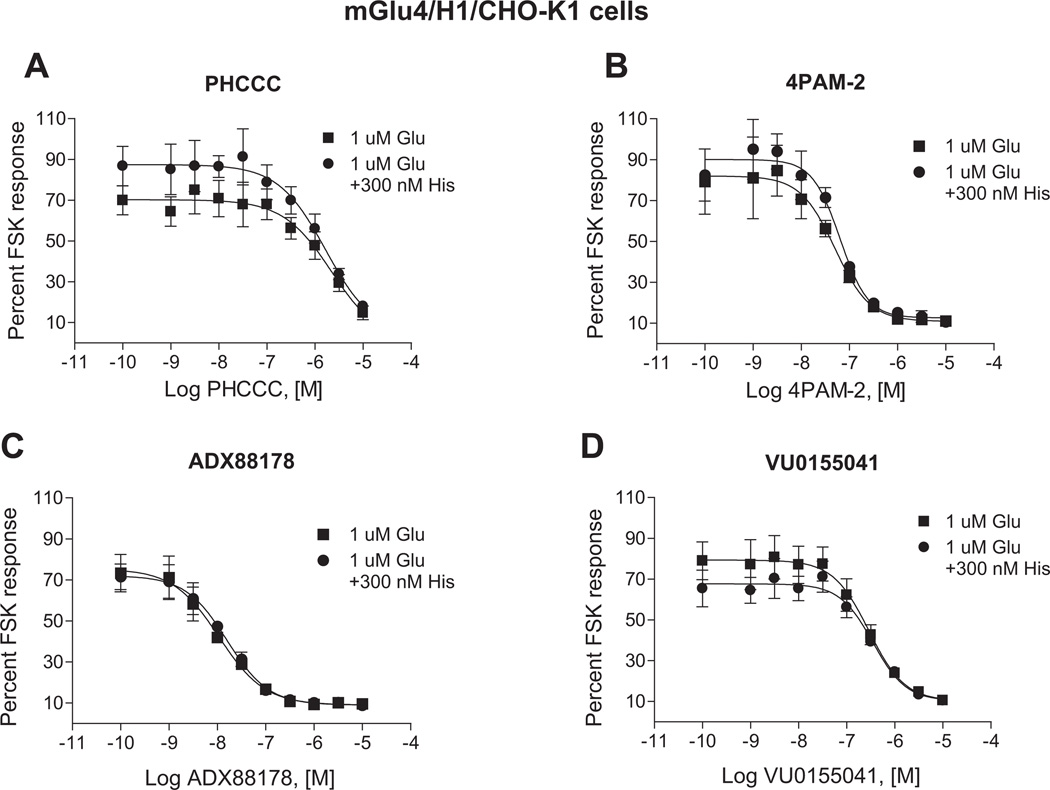Fig. 9.
In contrast to effects on calcium mobilization, histamine has no effect on the activity of mGlu4 PAMs in adenylate cyclase assays in cells expressing both mGlu4 and H1 receptors. Increasing concentration of mGlu4 PAMs (PHCCC, 4PAM-2, ADX88178 or VU0155041, A-D, respectively) were co-diluted with 1 µM glutamate and incubated with mGlu4/H1/CHO-K1 cells either alone or together with 300 nM histamine. Intracellular cAMP concentration was measured as described and then normalized to either 20 µM forskolin response or 20 µM forskolin + 300 nM histamine, respectively. Potencies in the absence or presence of 300 nM histamine were: PHCCC, 2.5 ± 0.6 µM vs. 1.8 ± 0.4 µM (p = 0.40; unpaired t-test); 4PAM-2, 55.5 ± 12.6 nM v.s 66.1 ± 8.6 nM (p = 0.53; unpaired t-test); ADX88178, 11.7 ± 2.0 nM vs. 16.0 ± 4.3 nM (p = 0.42; unpaired t-test); and VU0155041, 287.3 ± 23.1 nM vs. 360.0 ± 38.8 nM (p = 0.18; unpaired t-test). Maximal inhibition values in the absence or presence of 300 nM histamine were: PHCCC, 85.3 ± 3.4% vs. 82.0 ± 2.7% (p = 0.49; unpaired t-test); 4PAM-2, 89.0 ± 1.2 nM vs. 89.4 ± 0.6% (p = 0.77; unpaired t-test); ADX88178, 90.4 ± 1.5% vs. 91.1 ± 0.6% (p = 0.70; unpaired t-test); and VU0155041, 89.5 ± 0.4% vs. 90.0 ± 0.1% (p = 0.85; unpaired t-test). Data shown were performed in triplicate; Mean ± SEM. Statistical analysis was performed using GraphPad Prism (La Jolla, CA).

